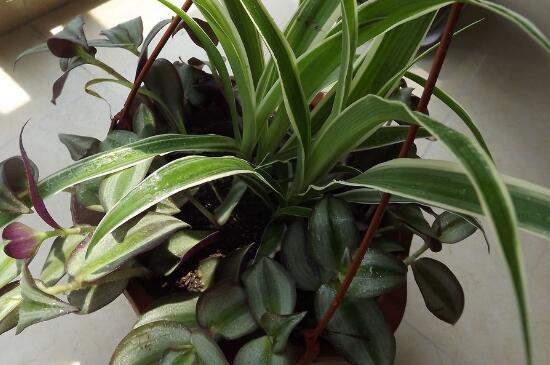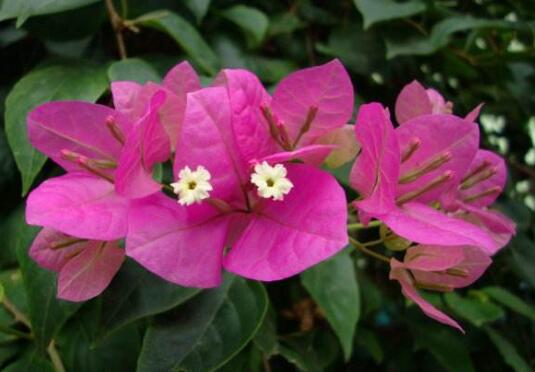What to do if the rattan rose grows worms? pest control of Fujimoto rose / 2 insect pests 2 diseases
In the growth process of Fujimoto rose, the last thing we want to encounter is diseases and insect pests, this kind of problem is very harmful to the plant, so we must deal with it in time when it is found. What about the growing worm of Fujimoto rose? What do you need to do to control diseases and insect pests of Fujimoto rose? Next, the editor will take you to learn about it.
First, Fujimoto rose worm how to do, find the reason

If you want to know what to do with Fujimoto rose worms, first of all, we have to understand what kind of insects are growing, so that we can deal with them pertinently, because the treatment methods of each kind of diseases and insect pests are different, and the specific treatment methods are described in detail below. Friends who are troubled in this respect can learn about it.
II. Pest control of Fujimoto rose (pest)
1. Aphids
Aphids are one of the most destructive pests on earth, which are harmful to many plants, and Fujimoto rose is one of them. The main damage of this pest is that adults and nymphs feed on leaves, stems, tender heads and tender panicle sap, resulting in a large loss of plant nutrients and wilting.
Control method: when we deal with the diseases and insect pests of Fujimoto rose, we can use 40% imidacloprid water solvent 1500: 2000 times to spray it.
two。 Whitefly
Whitefly is a small pest, but it is one of the most harmful pests among the diseases and insect pests of rattan rose. This pest pays attention to feed on the juice of the rattan rose, and will gradually absorb the juice in the stem, resulting in a large loss of nutrients in the plant, and finally withered and died.
Control method: in the prevention and control of this pest, we can use 20% of the wettable powder solution to kill it, usually three times in a row can kill this pest.
III. Pest control of Fujimoto rose (disease)
1. Black spot disease
The high incidence of this disease is in summer, so special attention must be paid to this season every year. In the early stage of the disease, there will be many brown spots on the leaves of Fujimoto rose. As the event goes on, the disease spots will gradually increase, and the color will gradually turn black. Finally, the whole plant of the vine this month withered and died.
Control method: when dealing with the diseases and insect pests of Fujimoto rose, we can spray the diseased plants with 800-fold solution of topiramate or 400-fold solution of thiophanate, once every half a month, and then recover after 3 consecutive times.
two。 Powdery mildew
Powdery mildew is a disease with a high incidence of Fujimoto rose. At the time of onset, many white powdery mildew layers will appear on the leaf surface, and with the passage of time, it will gradually cover the whole leaf, thus seriously affecting photosynthesis and interfering with normal metabolism, resulting in premature senility and loss of yield.
Prevention and control methods: in view of the diseases and insect pests of Fujimoto rose, we can use 75% chlorothalonil wettable powder 700 times to spray the diseased plant, which is usually sprayed once every 7-10 days, and can be cured after 2-3 times.
What should we do if holly grows insects? pest control of holly / 2 insect pests 2 diseases
In the growth process of holly, the last thing we want to encounter is diseases and insect pests, which do great harm to it, which will not only affect its ornamental, but also lead to its death. So what should I do if the holly grows worms? How does the pest control of holly need to be done? Next, the editor will take you to learn about it.
First, how to do holly worms? find the reason.
If you want to know what to do with holly worms, first of all, we have to find the reason and know what kind of insects are growing, so that we can deal with them pertinently, because the prevention and control methods of each kind of diseases and insect pests are different, and the details are introduced below. Friends who are troubled in this respect can learn about it.
II. Pest control of holly (pest)
1. Aphids
Aphids are a kind of pest that may occur in many plants, and holly is no exception. It mainly absorbs the sap from leaves, stems, tender heads and young ears, which makes the plant lose a lot of nutrients and finally wither.
Control methods: for aphids, which is a pest of holly, the most direct method is to use pesticides to spray them. In terms of pharmaceuticals, we can choose 3000 times of aldicarb wettable powder.
two。 Shell worm
The scale insect is a kind of harmful pest, which mainly threatens the leaves, branches and fruits of holly. It will cause yellowing of leaves, withering of branches, decline of tree potential and so on, as well as coal fouling disease.
Control method: for this holly pest, we can spray it with 1000-1500 times of insecticide mixed with 40.7% Lesbon EC and 80% dichlorvos EC.
III. Pest control of holly (disease)
1. Leaf spot disease
Leaf spot is a disease that may occur in many plants, and holly is no exception. The high incidence period of this disease is in spring and autumn every year, so we must pay special attention to it in these two periods. When this disease occurs, there will be many irregular brown disease spots on the leaves of holly, which will gradually spread with the passage of time, and finally lead to the phenomenon of plant death.
Control method: when we deal with this kind of holly pest, we can spray it with 80% mancozeb 400,600 times or 50% topiramate 1000 times, usually once every 7-10 days, and then recover after 1-2 times.
two。 Bud rot
The disease mainly threatens the young buds and young leaves of holly. At the beginning of the disease, the undeveloped leaves wither first, brown, and then droop. The pathogen will expand from the base of the tender leaves to the young tissue of the bud, causing the bud to die and rot, the plant to stop growing and, in severe cases, the whole plant to die.
Control method: when dealing with this holly disease and insect pest, we can use 80% mancozeb wettable powder 500 times to spray the diseased plant, usually once every 10 days, 3-4 times can be cured.
What to do with the growing insects of Photinia? control of diseases and insect pests / 2 insect pests and 2 diseases
In the process of raising heather, the last thing we want to encounter is diseases and insect pests. This kind of problem is very harmful to the plant. It not only affects the ornamental, but also leads to the phenomenon of plant death. What about the long worm of heather? how do you do the pest control of heather? Next, the editor will take you to learn about it.
First, how to do when the heather grows, and find the reason.
If you want to know what to do when heather grows, we must first understand what kind of insect is growing, so that we can deal with it pertinently, because the treatment methods of each kind of diseases and insect pests are different, and the details are introduced below. Friends who are troubled in this respect can learn about it.
2. Pest control of Photinia paniculata (pest)
1. Aphids
Aphids are a kind of pest that may occur in many plants, and Photinia is no exception. It mainly uses nymphs to absorb the sap from leaves, stems, tender heads and young ears, which makes the plant lose a lot of nutrients and finally wither.
Control methods: in view of aphids, which is a pest of Photinia, the most direct method is to use pesticides to spray them. In terms of pharmaceuticals, we can choose 3000 times of aldicarb wettable powder.
two。 Shell worm
Scale insects prefer to grow in a warm and humid environment, which is easy to occur if the growth environment is too dry. It mainly threatens the branches, leaves and fruits of Photinia officinalis, which will cause the leaves to yellowing, the tree potential to decline gradually, and finally the phenomenon of wilting.
Control method: when we deal with the diseases and insect pests of Photinia officinalis, we can spray it directly with 1000 times of imidophos or 3000 times of 2.5% deltamethrin.
Third, the prevention and control of diseases and insect pests (diseases)
1. Leaf spot disease
Leaf spot disease, through its name, we know that it is harmful to plant leaves, when the disease occurs, there will be many irregular disease spots on the leaves, and small black spots will appear on the disease spots over time, which will greatly affect the ornamental.
Control method: when we deal with this kind of heather disease and insect pest, we can use 50% carbendazim wet powder 500 times to spray the diseased plant, generally spray once every 7-10 days, and then recover after 3-4 times.
two。 Rust disease
Rust is a kind of plant disease caused by the parasitism of rust in fungi, which mainly harms the leaves, stems and fruits of Photinia. During the onset of the disease, there will be many blister spots in the affected area, and in severe cases, the blister spots will be dense into pieces, so that the plant will die quickly due to the evaporation of a large amount of water in the body.
Control methods: when we deal with the diseases and insect pests of Photinia, we can use 2000-3000 times of uniconazole wettable powder to spray and control plants, generally spraying once every ten days, and can be cured after 1-2 times.
- Prev

What if Phnom Penh Cymbidium grows insects? disease and pest control of Phnom Penh Cymbidium / 3 insects and 2 diseases
As a kind of hanging orchid, Phnom Penh has inherited many advantages of its ancestors. It not only has strong adaptability and good growth, but also can absorb formaldehyde, which is the reason why flower friends keep it at home. However, in indoor farming, the plant inevitably grows sick for a variety of reasons. that
- Next

What to do with the growth of glabrous flowers? pest control of glabrous cotyledons / 2 insect pests 2 diseases
In the process of cultivating bare-leaf cotyledons, the last thing we want to encounter is the problems of diseases and insect pests, which do great harm to the plant, which will not only affect its ornamental, but also lead to the phenomenon of plant death. What about the bare-leaf flower worms?
Related
- Fuxing push coffee new agricultural production and marketing class: lack of small-scale processing plants
- Jujube rice field leisure farm deep ploughing Yilan for five years to create a space for organic food and play
- Nongyu Farm-A trial of organic papaya for brave women with advanced technology
- Four points for attention in the prevention and control of diseases and insect pests of edible fungi
- How to add nutrient solution to Edible Fungi
- Is there any good way to control edible fungus mites?
- Open Inoculation Technology of Edible Fungi
- Is there any clever way to use fertilizer for edible fungus in winter?
- What agents are used to kill the pathogens of edible fungi in the mushroom shed?
- Rapid drying of Edible Fungi

